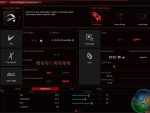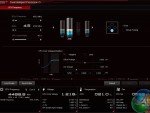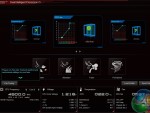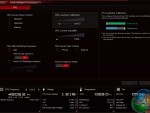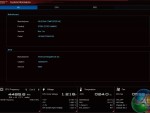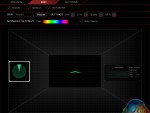Software
To say that ASUS includes a dizzying amount of software with its Z270 motherboards would be an understatement. Luckily, unlike MSI, ASUS uses its AI Suite 3 tool to good effect in managing a large proportion of the software under a single umbrella (though not to the same level that Gigabyte does).
AI Suite 3 is the go-to point for any settings or information relating to system operations. Want to check temperatures and voltages or adjust multipliers for the CPU and speeds of fans? AI Suite 3. Want to speed up certain programs or reduce the amount of RAM-hogging operations on your system? AI Suite 3. Want to check for a BIOS update? AI Suite 3.
Automated system tuning conducted by the 5-way optimisation tool can also be selected inside AI Suite 3.
ASUS' AURA RGB tool is a very comprehensive piece of software used for managing the colours and operating parameters of onboard and connected LEDs. LED operating modes can be synchronised with other compatible hardware, such as ASUS graphics cards, or managed for the motherboard alone.
I particularly like the CPU temperature mode that changes the light colour based on processor thermals. This is better than any solution that MSI or ASRock offers and is similar to one of the options in Gigabyte's ‘intelligent' RGB Fusion modes (though Gigabyte has additional modes available).
GameFirst IV can be used to prioritise network traffic in a similar fashion to Killer's Network Manager software, but whilst using an Intel I219V NIC. For example, higher priority can be set to Steam or a game than a web browser in order to prioritise traffic and minimise lag during gameplay. Multi-Gate Teaming support is available although that is not important for the Z270F Gaming given its single networking adapter.
RAMCache II uses free system memory to act as a read/write cache on top of a storage drive (including NVMe SSD) that allows for faster access to frequently-used data. This can have a benefit of speeding up frequently-accessed programs. This is a smart tool which makes use of a user-determined amount of system memory that would otherwise be sat idle.
Sonic Radar III features a revamped display method for the on-screen overlay that can be used to display the direction of enemy audio outputs. Improvements to Sonic Radar have been made on the overlay's resolution and the intensity of visualisations. These improvements are designed to make the software easier to use and its results easier to interpret.
Sonic Studio III allows a user to tune the audio system to their own personal preference. Different profiles can be set for different applications and there are also several pre-determined effects saved in the software.
Additional utilities available to download include ASUS' CloneDrive which can be used to create a 1:1 data clone (not partition, therefore resulting in a small size) of a drive in order to create an image backup or switch to a new SSD.
Software Summary
The sheer volume and quality of OS-based software that ASUS makes available is impressive. AI Suite 3 is home to the important system-related settings and does a good job at categorising several tools under one single umbrella suite rather than multiple individual shortcuts. The Dual Intelligent Processors 5 tool's ability to set specific turbo modes for chosen apps is a good feature that may prove useful to some people.
I am slightly disappointed to see the omission of ASUS' superb USB 3.1 Boost software tool that proved useful in boosting USB transfer rates for motherboards in previous generations when using Windows 7. With that said, the prevalence of Windows 10 and its built in UASP drivers on new PCs makes it understandable as to why USB 3.1 Boost has been omitted by ASUS.
AURA is another excellent tool that provides a good degree of RGB customisation in terms of colour and operating modes. The tool is better than MSI's and ASRock's offerings but isn't quite as good as Gigabyte's due to ASUS providing only a CPU temperature ‘intelligent' lighting mode.
RAMCache II is another smart piece of software that can help to make use of wasted system RAM and provide a speed boost in doing so.
Be sure to check out our sponsors store EKWB here
 KitGuru KitGuru.net – Tech News | Hardware News | Hardware Reviews | IOS | Mobile | Gaming | Graphics Cards
KitGuru KitGuru.net – Tech News | Hardware News | Hardware Reviews | IOS | Mobile | Gaming | Graphics Cards



